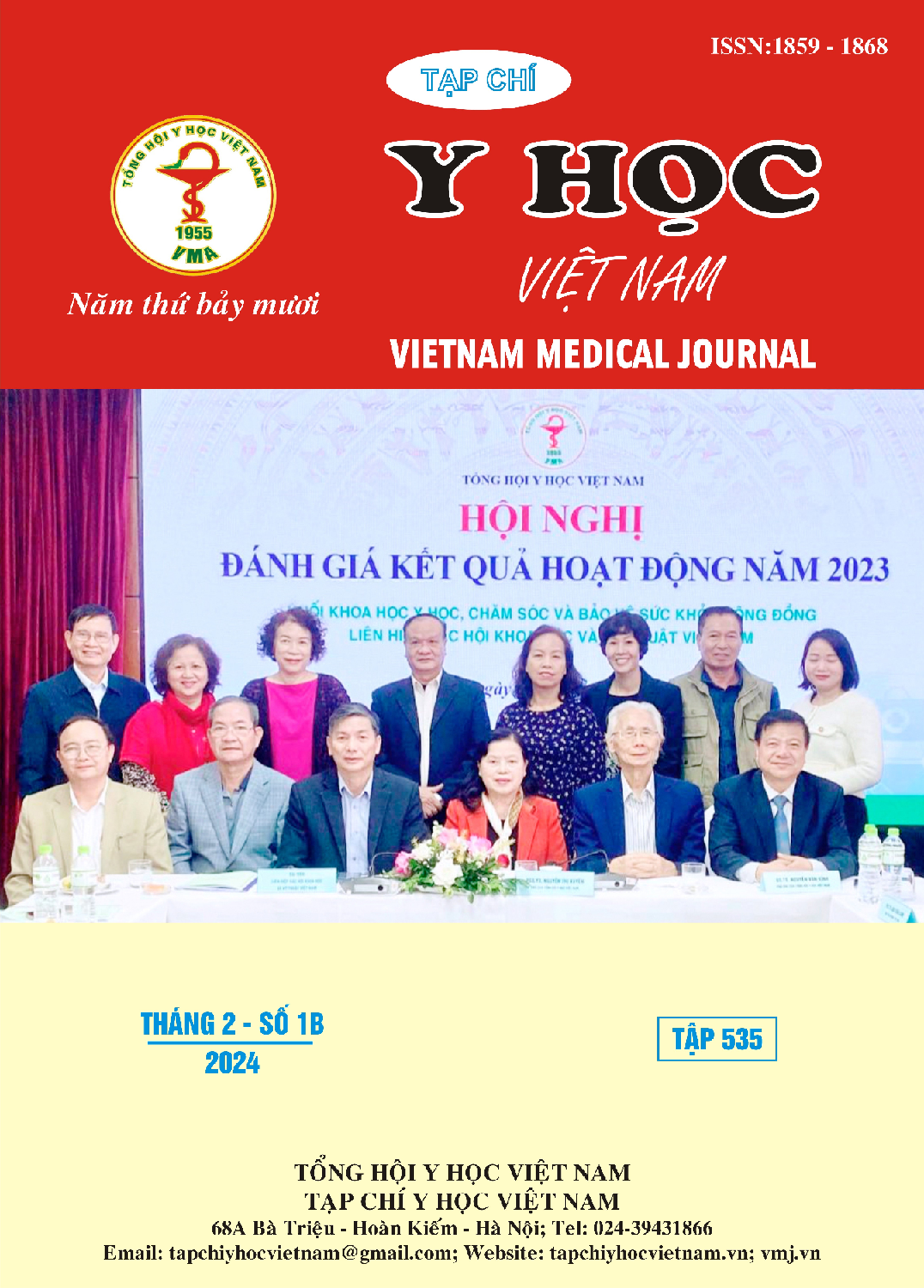KHẢO SÁT ĐẶC ĐIỂM GIẢI PHẪU KIỂU TẬN CÙNG CỦA ĐỘNG MẠCH MẶT GÓP PHẦN ỨNG DỤNG TRONG CAN THIỆP VÙNG MẶT
Nội dung chính của bài viết
Tóm tắt
Mở đầu: Biến chứng mạch máu của các nhánh động mạch mặt thường gặp ở vùng lưng mũi, sống mũi, chóp mũi và vùng mí mắt. Nghiên cứu này cung cấp thông tin giải phẫu về động mạch mặt. Đối tượng và phương pháp nghiên cứu: Thiết kế nghiên cứu mô tả tiến cứu, thực hiện phẫu tích 30 nửa mặt từ 15 thi hài người Việt Nam trưởng thành. Kết quả: Động mạch mặt tận cùng dưới dạng động mạch góc là phổ biến nhất, chiếm 14/30 trường hợp (47%) (Dạng 1). Còn lại, động mạch Mặt tận cùng dạng động mạch môi trên chiếm 8/30 trường hợp (27%) (Dạng 2), động mạch mũi bên chiếm 7/30 (23%) (Dạng 3) và kém phát triển trong 1/30 trường hợp (3%) (Dạng 4). Bàn luận: Kiểu tận cùng của động mạch mặt rất thay đổi, có dạng kém phát triển. Kết luận: Việc kiểm tra mạch máu cẩn thận trước khi thực hiện các thủ thuật ghép vạt có cuống hay các thủ thuật vùng mặt khác là cần thiết.
Chi tiết bài viết
Từ khóa
Động mạch mặt, kiểu tận cùng của động mạch mặt.
Tài liệu tham khảo
2. Ge NN, McGuire JF, Dyson S, Chark D. Nonmelanoma skin cancer of the head and neck II: surgical treatment and reconstruction. American Journal of Otolaryngology. 2009;30(3):181–192.
3. Boyd AS, Shyr Y, King LE. Basal cell carcinoma in young women: an evaluation of the association of tanning bed use and smoking. Journal of the American Academy of Dermatology. 2002;46(5): 706–709.
4. Lee W, Koh IS, Oh W, Yang EJ. Ocular complications of soft tissue filler injections: A review of literature. J Cosmet Dermatol. 2020 Apr;19(4):772-781. doi: 10.1111/jocd.13213. Epub 2019 Nov 11. PMID: 31709739.
5. Salgarelli AC, Bellini P, Multinu A, Magnoni C, Francomano M, Fantini F, Consolo U, Seidenari S. Reconstruction of nasal skin cancer defects with local flaps. J Skin Cancer. 2011;2011:181093. doi: 10.1155/2011/181093. Epub 2011 Jun 7. PMID: 21773033; PMCID: PMC3135072.
6. Dupoirieux L, Plane L, Gard C, Penneau M. Anatomical basis and results of the facial artery musculomucosal flap for oral reconstruction. Br J Oral Maxillofac Surg. Feb 1999;37(1):25-28. doi:10.1054/bjom.1998.0301.
7. Furukawa M, Mathes DW, Anzai Y. Evaluation of the facial artery on computed tomographic angiography using 64-slice multidetector computed tomography: implications for facial reconstruction in plastic surgery. Plast Reconstr Surg. Mar 2013;131(3):526-535. doi:10.1097 /PRS.0b013e31827c6f18.
8. Koziej M, Trybus M, Hołda M, et al. Anatomical Map of the Facial Artery for Facial Reconstruction and Aesthetic Procedures. Aesthet Surg J. Oct 15 2019;39(11):1151-1162. doi:10.1093/asj/sjz028.
9. Pilsl U, Anderhuber F, Neugebauer S. The Facial Artery-The Main Blood Vessel for the Anterior Face? Dermatol Surg. Feb 2016;42(2): 203-208. doi:10.1097/dss. 0000000000000599
10. Lohn JW, Penn JW, Norton J, Butler PE. The course and variation of the facial artery and vein: implications for facial transplantation and facial surgery. Ann Plast Surg. Aug 2011;67(2):184-188. doi:10.1097/SAP.0b013e31822484ae.


